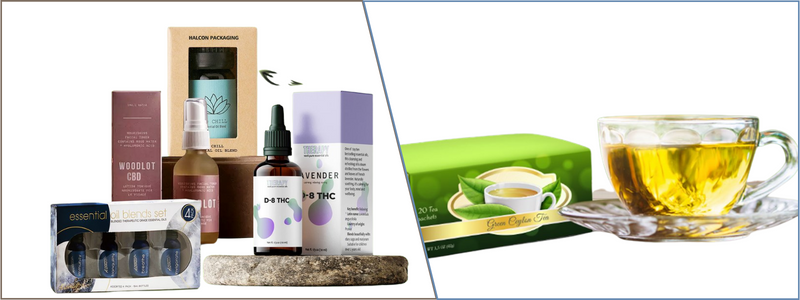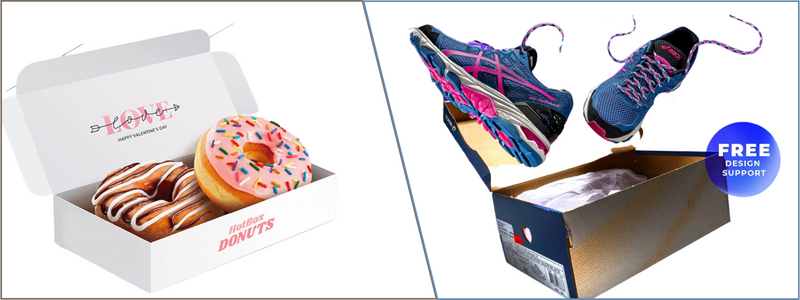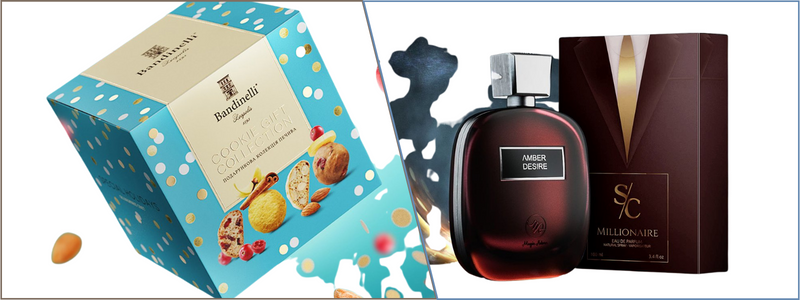Having a packaging design matters more than you think. Customers notice packaging on store shelves and create a first impression about your product. The material protects during transport, whereas the shape and prints convey quality. Brand elements on the package include colors and logos, which help customers identify the company behind the product. An excellent first impression also increases brand awareness and improves your chances of gaining wider-scale recognition. Well-designed product packaging designs attract customers and potentially boost sales and the brand’s reputation. However, the influential design does not come cheap.
Table of contents
Packaging design cost
Reputable companies can charge between $10,000 and $20,000 for the design, excluding the manufacturing cost. They have expensive professionals on the payroll, state-of-the-art equipment, and an overall costly overhead to cover. Reputation and experience working with international brands will justify the high rates.
RELATED: Learn about 3D product rendering costs, rates, and pricing for 3D visualization services?
Hiring world-renowned design companies don’t make much financial sense for small to midsize businesses. Small businesses probably do not have the resources to fund an expensive packaging design project because a more considerable portion of their budget is used for product development. Small design firms or freelance graphic designers are the most likely options. As a general guideline, expect to pay around service rates as follows:
| Cost | Services Included | Typical Clients |
| $500 | A brief consultation with a professional to determine the most appropriate design ideas that complement brand identity. You may get a couple of packaging designs and several revisions. Turnaround time is from 1 to 2 weeks. | Startups or anyone with small budgets |
| $1,000 | Preliminary discussion about the brand identity, target market, and product pricing. The designer may be able to create three or more packaging concepts and offer a significant number of revisions, too. You have more freedom to determine the style, color, and shape, but the designer may require you to provide a ready-made template. Expect at least a 2-weeks turnaround time. | Small to midsize businesses or well-funded startups |
| $3,000 and up | Consultation with both a design professional and a marketing strategist. The freelancer or firm may provide comprehensive market research to see how your brand stacks up against competitors on sales affected by packaging design. You get 3 – 4 packaging concepts and even more revisions. If needs be, the firm will collaborate with a prototype maker to get a physical sample. It may take 30 days or more to finish the project. | Brands looking for agency-grade packaging design |
RELATED: New product packaging design & why it’s essential for product designers

Pricing tiers
Much like most things in life, the price of a packaging design usually signifies the quality. Good packaging takes time, so the designer must pour extra efforts to produce an effective result – presumably better than your competitors. When it comes to packaging design, for instance, cosmetic packaging design, you are not precisely buying ready-to-use graphics. Instead, you pay for the services required to complete all the design processes; the final packaging design is custom-made to deliver specific results from a defined target market.
Both tangible and intangible factors inevitably affect the price. In addition to the services provided, the designers may charge more money given their level of expertise and experience. A successful design track record also reassures that your project is in good hands. Packaging design firms, or their works, can be divided into four major categories based on prices.
RELATED: 20 Minimalistic packaging design concepts for products
Packaging design – level 1
The lowest level costs around $100 or less. Sometimes you have no choice but to outsource a packaging design project to a freelancer based in China, India, or other countries where labor is cheap. Thanks to the low wages, regional companies can afford to offer their services at a seemingly impossible rate. At a glance, it appears like a cost-effective method to obtain new design, but it can be a risky business on your part for a few reasons:
- The language barrier is a big obstacle. Putting a design project into the hands of an overseas firm means you have to deal with the risk of communication difficulties. Subsequently, the design may take a significant deviation from the project brief, resulting in repeated revisions and perhaps a complete do-over. Every modification is another setback, both in time and money.
- When quick turnaround is of the utmost importance, quality and originality are less prioritized. Poorly-made design and copyright issues are not uncommon.
RELATED: How to find a fantastic freelance packaging designer
If you have to outsource, pick an English-speaking freelancer or a platform based in developed countries. Not every design firm outside of the Western Hemisphere is of substandard quality – it is just difficult to find a needle in a haystack. Some design firms based in the United States, Canada, the United Kingdom, and Western Europe are not always top-notch either; however, the vast majority can provide a much better quality of service than their Chinese or Indian counterparts.
Packaging design – level 2
It is not unusual to see a price range of $1,000 or more at a step higher. Design firms at this level deliver decent services and are suitable for startups with a strict budget. You can find CAD freelance designers in the United States and Canada who will lend their packaging design expertise for under $2,000 – perhaps a little less if you are willing to do some preliminary design work beforehand. It is the most crowded price range, filled with hundreds of design firms and freelancers with varied experiences and reputations.
- Due diligence is advised; make time to compare at least several potential firms before the hiring decision. Look at their portfolio and schedule an interview to see if they can cater to your design style and communication skill requirements. Being strict on budget also means you cannot afford to make a hiring mistake. Be sure that the packaging design you receive is worth every penny.
- Revisions are not setbacks but the nature of the project. After the first deliverable arrives, you will inevitably find room for improvement, and it may take two or three revisions before every detail comes together.
RELATED: Secrets for creating new memorable product packaging designs
Packaging design – level 3
A sensible choice is a custom design agency specializing in product packaging designs. The price starts at $10,000, which is not unreasonable for midsize businesses trying to penetrate the market once again and outperform competitors with fresh looks. Many (if not most) clients do not understand the connection between the expectation and the cost to meet one. For a packaging design to deliver results, including increased sales and instant brand recognition, its creation process must go through thorough research and exceedingly difficult design work. The product is displayed on store shelves amongst other similarly priced competitors, and customers look at the packaging for only 2 – 3 seconds before making the purchase decision.
An effective packaging design conveys all the right messages within those few seconds, convincing buyers about the quality of the product and the reputation of the company behind it. Among the essential purposes of packaging is to draw buyers’ attention. To achieve the objective, it takes a clever strategy and in-depth research of the target market, and an understanding of consumer psychology. Visually pleasing graphics alone are often not enough when most of your competitors also have an eye-candy approach to packaging design.
RELATED: Actionable tips to successfully prepare your product packaging for the US market

It would be best to stand out from the crowd without leaving the impression of “being out of place” on store shelves. Custom logo and design service agencies implement strategies based on the client’s position in the market and specific needs as follows:
- A new company, brand, or product
- Established brand with multiple product variations. When the same brand is used for an assortment of products, the packaging should send a clear message about the company selling them.
- Existing companies in an attempt to renew or re-evaluate their brands. Packaging design must reflect the old and new identities recognizably.
The services of a custom design firm cover not only the visual aspects of the design but also thorough research into your target customers’ preferences and competitors’ performance. Based on the evaluation, the firm should be able to narrow down the design options. Instead of creating random good graphics, the final design is the outcome of a meticulous process.
RELATED: 16 Tips to make your new product packaging design stand out
Packaging design – level 4
Design agencies of international scale with experience working for big brands are at the top. The price starts at $15,000 for a single packaging design. With an unusual scenario and impeccable track record of working with global brands, it wouldn’t be a farfetched idea if such a design firm charges tens of thousands of dollars for a project. Price gets even more expensive if the agency has an award-wining design in the portfolio. The most likely clients have established companies needing “global status” and quality assurance at the highest level.
Layers of packaging
There are three essential layers of packaging:
Primary
The packaging is closest to the product itself. The can or bottle and the label are called the primary layer if the product is a beer.
Secondary
A layer outside the primary packaging. A box may contain some beer cans; the box (labeled with relevant branding) is the second layer.
RELATED: Sustainable packing design tips for new products at your firm
Tertiary
The outermost packaging layer – with appropriate logos and design – protects the product during transport.
- Most mass-produced goods require all three layers, even when the tertiary one is discarded just before the products hit store shelves. The product design for manufacturing the primary and secondary layers must showcase uniformity in colors and logos, if not exact details.
Why packaging design matters
Packaging is a practical tool to protect the product from all sorts of damages until it reaches customers’ hands. The materials offer protection, and the overall design sends a message. An effective packaging design should be able to:
Create brand identity
Every company or brand has a story. It is the part of a brand’s identity that you want to share with the customers. The most effective way to share the story is through your product packaging design. It is the first thing customers see, and the interaction may not last for more than five seconds. Every design element on display, including the logo, typeface, and color scheme, must convey the message accurately and be attractive enough to be recognizable anywhere.
RELATED: Your product packaging design can make your brand into an icon

Communication tool
An eye-catching design helps attract buyers’ attention. Once the customers see the packaging, the designer must inform them of everything they need to know about the product. It should be neither a blank page nor an overloaded announcement. The packaging only has to tell enough simple information about the manufacturer, expiry date (if any), where buyers can find information about the brand, who the product is for, and why it is suitable. Secondary packaging is often necessary for a new product prototype design that requires a user manual.
Give a lasting impression.
Unique packaging doesn’t have to be outrageous, and you can use creative graphics and logos to create a solid first impression. Whether on store shelves or e-commerce websites, “unusual” packaging is much more attractive than its generic types.
Effective packaging design must possess the following aspects:
- Understandability: there is no point in creating visually-impressive packaging if the customers cannot read or perceive the intended message. A poorly-designed packaging does nothing but confuses customers. The gap between triggering curiosity (the moment customers see it) and providing an answer (reading the information in the packaging) is only a few seconds. Make every single one count.
RELATED: Creative packaging design trends for new products moving into 2022
- Versatility: even if the packaging design is used only for one brand or product at the moment, you will want to expand the market and product lineup in the future. Consistency in packaging design makes sure customers still recognize the brand regardless of the product.
- Honesty: an exaggeration is acceptable to some extent, but thread carefully. If the claim in the packaging misleads the customers into believing that your product is more than what it is, you will lose credibility.
Perfect packaging design grabs customers’ attention and retains the impression. Another critical factor to consider is “perceived value,” which refers to how the customers judge the quality, merit, or desirability of a product compared to the competitors. In other words, a packaging design that looks cheap can hardly convince customers that the product inside is not.
How Cad Crowd can assist
At Cad Crowd, we have a network of product packaging design experts who can help create the perfect package for your product. If you’re interested, contact us today for a free quote.
